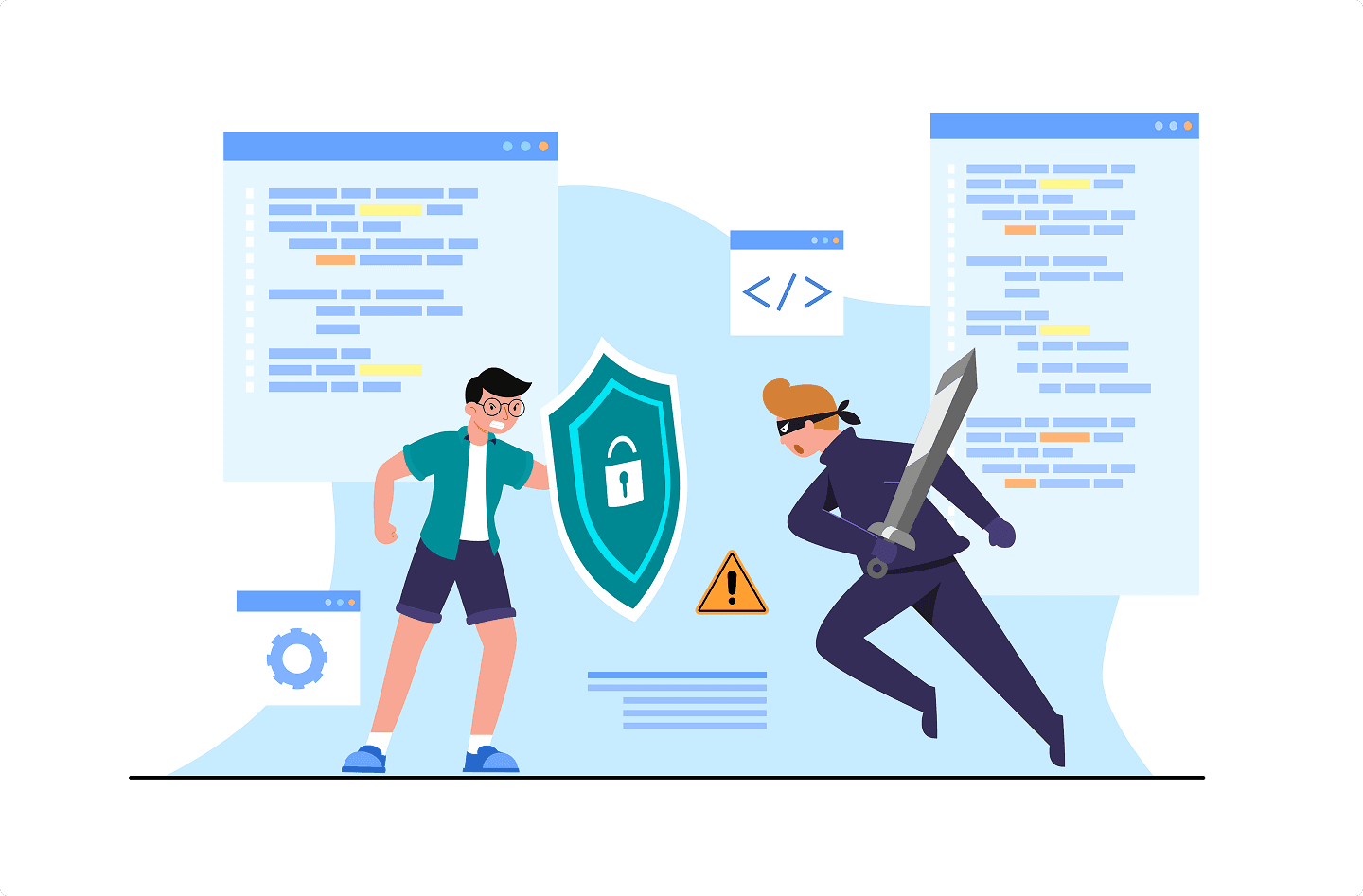Introduction
In cybersecurity, the danger doesn’t always come from where you expect. As you read this, thousands of cyberattacks are happening worldwide. While some target tech giants, more and more are hitting SMEs, freelancers, and associations. Why? Because they’re often unprepared. A recent study shows that 60% of small businesses close within six months of a cyberattack.
So, is your business really protected? In this article, we won’t drown you in technical jargon or try to scare you unnecessarily. We’ll simply review 7 concrete points you can check right now to assess your company’s security level. If you tick all the boxes, great. If not, better to find out today than too late.
1. Do you have a real password policy or just good intentions?
Passwords are obvious. But obvious doesn’t mean well-managed. Too many companies rely on employee “common sense.” Bad idea. Post-it notes under keyboards, overly simple passwords, and recycled logins are frequent — and dangerous.
People think a strong password is enough. Without a broader approach, it isn’t. A real password policy includes:
- A centralized password manager to avoid unprotected Excel files
- Mandatory complexity rules (uppercase, numbers, symbols)
- Regular updates for sensitive accounts
- Enabling 2FA on critical tools
It may take effort to set up, but it pays off in peace of mind. And believe it or not, your teams can adapt quickly with a bit of support.
2. Backups aren’t enough. Can you restore them?
Many businesses think they’re safe because they have backups. But an untested backup is like a seatbelt you’ve never tried fastening. It looks fine, but when you need it, it fails.
Worse, some think they’re backing up when they’re only saving office files — not the client database, CRM, or emails. A true backup strategy covers everything, with clear priorities and recovery scenarios. Restorations should be tested regularly, ideally under realistic conditions. Multiple storage methods matter too: secure cloud, local server, offline disk. No solution is perfect, but combining them raises your chances.
3. Do you leave automatic updates on or turn them off?
Nobody likes restarting their computer during a meeting because of a Windows update. So we postpone them. Then forget. Meanwhile, known vulnerabilities remain open. That’s exactly what attackers look for: documented flaws left unpatched.
The good news? There are tools to automate updates without disrupting work. Patch management systems can schedule updates across all devices, flag failures, and centralize control. The goal isn’t forced reboots but avoiding weeks of exposure.
And it’s not just operating systems: browsers, plugins, antivirus, business software, and even internet boxes must stay updated. Few businesses manage this seriously.
4. Is your network segmented or wide open?
Picture a company where everyone — employees, contractors, visitors — connects to the same network. One device gets hit by ransomware, and the whole network collapses in under an hour. The guest Wi-Fi connects to network printers? That’s how a trivial gap turns into a nightmare.
Network segmentation isolates critical services, limits access, and prevents local issues from becoming global crises. HR doesn’t need access to dev tools, and developers don’t need HR files. Visitors should never share the same network as your file server. The more you segment, the less exposed you are. It’s not a massive technical hurdle. It’s basic good practice. And it could save your business.

5. Who’s responsible for cybersecurity in your business?
Often, no one. Or everyone. Which really means no one. Some rely on their IT provider. Others think it’s the CEO’s job, or the sysadmin’s, or simply… nobody’s, since “everything works fine so far.” That “if it ain’t broke, don’t fix it” mindset is dangerous. You need a pilot in the plane. Not necessarily a full-time expert, but at least a designated point person.
This person becomes the go-to in case of incidents, leads employee awareness, manages access policies, ensures updates and backups happen, coordinates audits, and keeps the recovery plan alive. They won’t fix everything, but they create the missing link. And today, too many companies lack it.
6. Can your team spot an attack?
Phishing is everywhere, but few employees truly recognize it. A realistic email, a fake site link, a malicious attachment — and suddenly the company is locked by ransomware. Worst of all, it’s often an employee who clicked, thinking they were doing the right thing. Not out of carelessness, but out of unawareness.
Training your teams isn’t about scaring them. It’s about giving them reflexes. No need for 3-hour monthly workshops. A quarterly video capsule, an interactive quiz, or a simulated phishing test is often enough to raise awareness. Cybersecurity is part of company culture. And sometimes, a trained employee can catch what no software detects.
7. Have you tested your business continuity plan?
It’s usually the most important document — and the least read. When an attack hits, power cuts servers, or a fire destroys the office, this plan should say exactly who does what, in what order, with which tools. Yet too many companies rely on a Word file written three years ago, never updated, never tested.
A strong continuity plan means realistic scenarios with clear priorities: What gets restored first? Who gets notified? How long can you go without email? Which tools must work remotely? Most importantly: have you ever simulated a real outage?
Here’s what every solid continuity plan should include:
- A clear map of critical systems
- Internal and external crisis contacts
- Step-by-step restart procedures
- Realistic recovery times (RTO/RPO)
- Feedback from past tests
Testing once a year is like a fire drill. Boring, maybe. But life-saving when disaster strikes.

Conclusion: It’s Not If, but When
Thinking hackers won’t target your business is an illusion. They don’t only chase big corporations. They look for vulnerabilities. If you have them, you’re a target. The good news? Most cybersecurity issues come from poor organization, not lack of resources. By reviewing these 7 points now, you take the lead. You show clients, teams, and yourself that your business takes security seriously. And in 2025, that’s a competitive edge.
So, is your business really protected? Time to find out.




